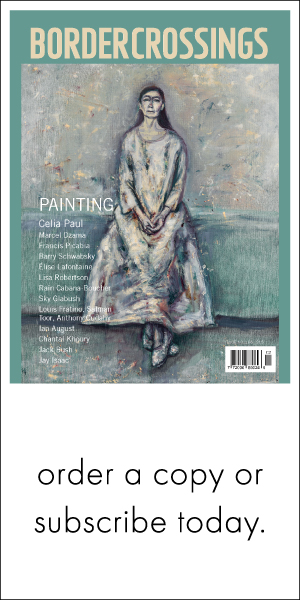Peter S. Grant is a senior partner of McCarthy Tétrault LLP. He is the co-author of Blockbusters and Trade Wars: Popular Culture in a Globalized World (Douglas and McIntyre, 2004).
Related Letters and Responses
Peter S. Grant’s excellent excursion into the impact of “long-tail” retailing on book publishing shows that, for once, the economic weather has broken in favour of Canadian books. Grant rightly detects “heartening signs that the Internet could be helpful,” an argument I too make in a forthcoming updated edition of The Perilous Trade: Canadian Book Publishing 1946–2006.
Until recently, trade publishers relied almost exclusively on bookstores to sell their titles for them. Publishers, booksellers, libraries and readers have been the interdependent limbs of a single organism, of which authors represent the heart. When one part of the organism turns against the others, as the original incarnation of Chapters Inc. did in the late 1990s by preying on competitors and stiffing Canadian publishers, the result is self-mutilation. The casualties are still being counted.
Interdependence remains a crucial fact of life for the book trade, but the Internet has eased the suffocating form of co-dependency whereby, if bricks-and-mortar booksellers don’t stock and display a title, it dies from lack of oxygen. This is a bigger problem when one retail chain has a stranglehold on half the market. Now publishers, or for that matter authors, can promote and even sell their books directly through their websites. This new channel of communication scarcely supplants the bookseller’s key role, but adds another lifeline to make the trade a little less perilous.
Grant quotes Michael Tamblyn, the CEO of BookNet Canada, as saying that Canadian publishers must adapt their marketing strategies to take advantage of the opportunities offered by the Internet. This is already happening. In addition to the glossily attractive, multilayered websites of multinationals like Random House of Canada, smaller independent publishers are seizing the chance to build Internet communities for their books. Counterculture warriors of the 1960s and ’70s now do battle using monthly emailings and interactive websites featuring book excerpts, blogs, discussion materials for reading groups and discount offers. Consequently, book publishers begin to resemble magazine publishers, who have always to some degree circumvented the retail middleman by building relationships directly with their reader-subscribers. This is arguably a healthy, organic development.
Roy MacSkimming
Perth, Ontario
Small is what I am, so I am easily seduced by Peter Grant’s hopeful thesis that small may be beautiful in the context of Canadian book publishing. I wonder, though, about the tense of the verb “emerged” as it appears in the first sentence of Mr. Grant’s essay: “Five years ago, Canadian book publishers emerged from a horror story.”
My understanding is that the experience of The Porcupine’s Quill in the collapse of General Distribution was not uncommon. Elke and I lost a total of $65,000. The financial tsunami was cushioned with an $8,000 loan from Heritage Canada, which will be clawed back at the rate of $1,500 a year until the spring of 2008. The $65,000, of course, will not be recovered. And Chapters’ returns in our most recent fiscal year have ballooned to 135 percent of sales. And so the horror continues, unabated.
I wonder, as well, at Peter Grant’s claim that “an Internet bookseller can list and sell millions of different titles.”
Listing basic bibliographic information with the e-tailers is not particularly challenging. Adding jpeg images of the covers to the basic listings is tedious because most of the aggregators have different specifications for cover images. But the real issue in attempting to sell (rather than simply list) books online is availability. Books that sell online must be available for shipment within 24 hours, which means the books must (albeit in limited quantities) be physically present in some key warehouses. To get the books into those warehouses, of course, costs money.
Amazon.com is probably the most receptive to small press titles, with their Advantage program, which insists on 55 percent discounts and requires publishers to prepay freight to Lexington, Kentucky, and pays publishers on an inventory consignment basis. The “advantage” to the Advantage program is that publishers can directly affect the availability status of their titles. Chapters.indigo.ca, on the other hand, prefers to source books from Ingram in LaVergne, Tennessee, which does not accept small press titles on consignment. This means that most PQL titles listed on chapters.indigo.ca show as available in three to five weeks, which is close to useless.
I notice that Ingram now charges a $50 title fee to list new releases on Ipage. And Baker+Taylor wants $600 a year to provide access to TitleSource, so that I can then, at my expense, review and enhance my data on their machines, to their corporate benefit. Bowker offers similar paid access to globalbooksinprint.com.
It is not difficult to see where this sort of corporate gatekeeping could be headed, any more than it is difficult to understand why Kellogg’s Corn Flakes are positioned at eye level in supermarket aisles.
One possible remedy for the smallest of publishers may be Abebooks, on which a publisher can set up as a bookseller and sell directly to the public, and we do just that, but so far PQL sales on Abebooks do not come up to matching the $25-a-month title listing fee.
Tim Inkster, publisher, head pressman
The Porcupine’s Quill
Erin, Ontario

